Beetles
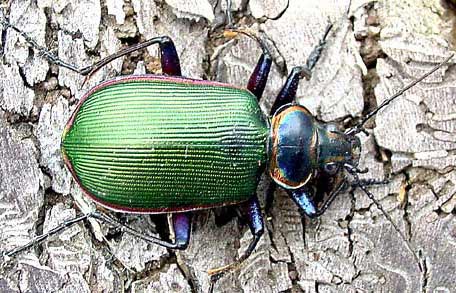
Gound Beetle (Calosoma Scrutator)
One of every five living species is a beetle. The order in the animal kingdom – Coleoptera (from the Greek root words “sheath” and “wing”) – which contains beetles and weevils has about as many species as the plant and fungi kingdoms (including algea) all combined! It is also an extremely diverse order with species that have adapted to crawling up into just about all known habitat types. Many prefer to climb around and they don’t use their wings as much as many insects do. They have developed hardened wing covers that they can fold their hind wings into for protection. Many species prefer black and brown however there are some brightly colored species as well, like ladybugs for example. They bore into all manner of living and dead plant matter and feed upon a wide variety of organic materials. Some beetles shred plants and go after human stored food supplies, while others operate in a beneficial manner by pollinating plants and preying on pests.
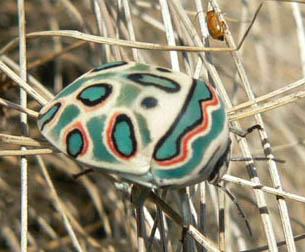
Hemipteran Beetle – Mozambique
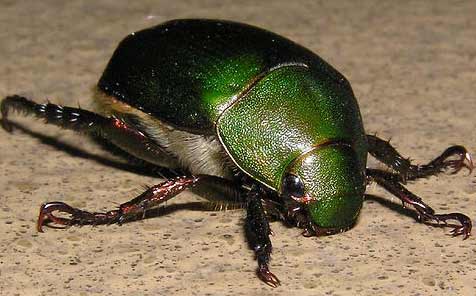
Scarab Beetle
The scarab beetle was sacred to the ancient Egyptians and is found frequently in their art and hieroglyphics. The beetle, who likes to roll around balls of dung, represented the Egyptian god Khepri who rolled the sun in and out of the world, transforming and resurrecting it each day.
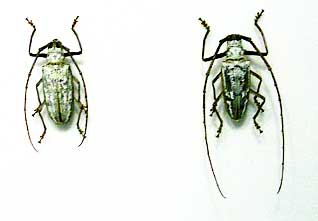
Beetles – Montreal Insectarium
Beetles communicate for perhaps many reasons but from what we can tell they primarily are looking for mates. They use many methods such as chemical, visual and mechanical. Bioluminescence in fireflies is the well known and easiest to see form of communication. Each individual species has its own unique pattern and presentation to help hone in on the right mates. The males often fly around at nighttime, flashing the unique pattern for their species. The rate of flashes and the duration of the flashes are important for them to be recognized as is the response of the female. The male repeats his flashing display at intervals until he can find a female who is responding after an appropriate delay with an appropriate signal and then they make their way to each other.
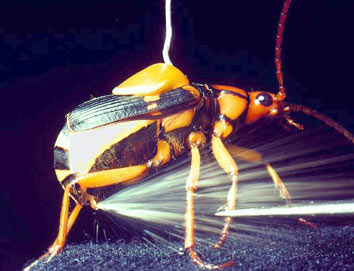
African Bombardier Beetle
When provoked, the bombardier beetle swivels the tip of its abdomen and shoots a jet of boiling chemicals at its attacker. The chemicals are produced in a “reaction chamber” causing an explosion you can actually hear. The spray of foul-smelling, hot vapors shoots out at 500 to 1,000 pulses per second at a temperature of 100°C. Some creationists have claimed that such a complex system could not have been developed through the process of natural selection and evolution but instead supports their theory of intelligent design. Evolutionists however, have tried to show how evolution of such a system may have been possible.

Beetles – Montreal Insectarium
Many bugs that are known by other names are in fact beetles. Ladybugs, fireflies, lightning bugs and june bugs are all other names for beetles. Also, the infamous attacker of cotton crops – the boll weevil, is a beetle.
